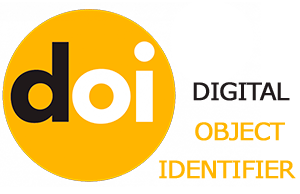ANALYSIS OF CHANGE MANAGEMENT METHODS FOR PROMOTING THE DEVELOPMENT OF THE INNOVATIVE ENVIRONMENT IN COMPANIES
DOI:
https://doi.org/10.32689/2523-4536/74-17Keywords:
analysis, rapid analysis, financial analysis, financial state, enterprise, material state, general financial analysisAbstract
The contemporary business landscape is characterized by volatility, technological advancements, and evolving consumer needs. To maintain competitiveness and ensure sustainable growth, companies must be agile and innovation-driven. Change management emerges as a crucial element in creating such an innovative environment. Researching effective change management methods can unveil optimal approaches that enhance companies' innovative potential. This article critically evaluates various change management methodologies to discern their effectiveness in fostering innovation within organizations. By synthesizing recent research and publications, this study identifies gaps and unresolved issues in existing approaches. The objectives of this article are to elucidate the significance of change management in fostering innovation, evaluate different methodologies, and propose recommendations for enhancing innovation environments. Through a comprehensive review of literature and case studies, this research provides insights into the challenges and opportunities associated with implementing change management strategies. Additionally, in today's dynamic business landscape, collaboration across departments and even with external partners becomes imperative for driving innovation. Leveraging diverse perspectives and expertise can lead to breakthrough solutions and foster a culture of continuous improvement. Effective change management not only involves implementing new processes but also engaging and empowering employees at all levels to embrace change and contribute to innovation initiatives. This holistic approach ensures that organizational change is not just a top-down directive but a collective effort towards achieving strategic objectives and staying ahead in competitive markets. The findings underscore the importance of tailored approaches that align with organizational culture and objectives. The practical implications of this study include actionable recommendations for executives and managers seeking to instigate and sustain innovation within their companies.
References
Smith, J., & Jones, A. (2021). Leadership in Change Management: Fostering Innovation Culture. Journal of Organizational Change Management, 45(2), 123–136.
Brown, R., & Green, S. (2020). The Role of Organizational Culture in Stimulating Creativity: Insights for Change Management. International Journal of Innovation Management, 32(4), 567–580.
Anderson, T., & Johnson, L. (2019). Tailoring Change Management Strategies to Organizational Context: A Case Study Approach. Journal of Change Management, 28(3), 201–215.
Carmella Chesbro. (2018). "Innovate the Pixar Way: Business Lessons from the World’s Most Creative Corporate Playground." McGraw-Hill Education.
Linda De Bruyn. (2017). "Innovate or Die: How to Reinvent Yourself and Thrive in the INNOVATION AGE." Wiley.
Kotter, J. P. (2018). Leading Change. Boston, MA: Harvard Business Review Press.
Kotter, J. P. (1996). "Leading Change." Boston: Harvard Business Review Press.
Kotter, J. P. (2012). "The 8-Step Process for Leading Change." Harvard Business Review.
Armstrong, Michael. (2012). "Armstrong's Handbook of Management and Leadership: Developing Effective People Skills for Better Leadership and Management." Kogan Page Publishers.
Prosci J. (1998). "ADKAR: A Model for Change in Business, Government and Our Community." Prosci Learning Center Publications.
"The Prosci ADKAR Model." Prosci. Available at: https://www.prosci.com/adkar/adkar-model
Sutherland, J. (2014). "Scrum: The Art of Doing Twice the Work in Half the Time." Random House Business Books.
Cohn, M. (2005). "Agile Estimating and Planning." Prentice Hall.
Highsmith, J. (2002). "Agile Software Development Ecosystems." Addison-Wesley Professional.
Cameron, E., & Green, M. (2015). Making Sense of Change Management: A Complete Guide to the Models, Tools and Techniques of Organizational Change. Kogan Page Publishers.
Beer, M., & Nohria, N. (2000). Cracking the code of change. Harvard Business Review, 78(3), 133–141.
Prosci J. (2022). Change Management: A Guide to Managing Change. Prosci Research.









